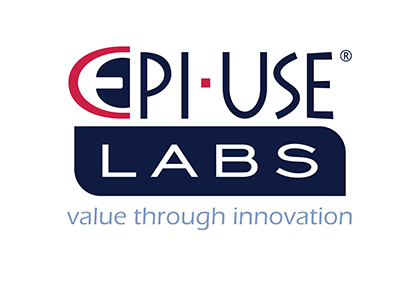SAP ABAP
Filter By
Browse By
- SAP Analytics and AI
- SAP Application Development and Integration
- All SAP Application Development and Integration
- SAP ABAP
- SAP ABAP Development Tools
- SAP ABAP Test Cockpit
- SAP API Management
- SAP BAPI
- SAP Basis
- SAP BRF
- SAP Business Application Studio
- SAP CMS
- SAP Design Studio
- SAP Development Tools
- SAP DevOps
- SAP EAI
- SAP EDI
- SAP Extension Suite
- SAP Fiori
- SAP Fiori Elements
- SAP Integration Suite
- SAP Low Code Application Development
- SAP Low Code Automation
- SAP Netweaver
- SAP Release Management
- SAP UI5
- SAP Web Application Server
- SAP Web IDE
- SAP Business Process Management
- SAP Center of Excellence
- SAP CIO
- SAP Customer Experience
- SAP Data and Data Management
- All SAP Data and Data Management
- SAP BW
- SAP BW/4HANA
- SAP Crystal Reporting
- SAP Data Archiving
- SAP Data Center
- SAP Data Governance
- SAP Data Integration
- SAP Data Migration
- SAP Data Quality
- SAP Data Services
- SAP Data Strategy
- SAP Data Visualization
- SAP Data Warehouse Cloud
- SAP DMS
- SAP Document Control
- SAP EIM
- SAP ETL
- SAP ETL Tools
- SAP HANA
- SAP HANA Administration
- SAP HANA Deployment Infrastructure
- SAP HANA Studio
- SAP Master Data
- SAP Master Data Governance
- SAP MDM
- SAP Enterprise Architect
- SAP Enterprise Asset Management
- SAP ERP
- SAP Finance
- All SAP Finance
- SAP Accounting
- SAP AR AP
- SAP Asset Accounting
- SAP Billing Systems
- SAP BPC
- SAP BRIM
- SAP Cash Management
- SAP Central Finance
- SAP Controlling
- SAP COPA
- SAP Cost Center Accounting
- SAP e-invoicing
- SAP FICO
- SAP Finance Automation
- SAP Financial Closing Cockpit
- SAP Financial Consolidation
- SAP Financial Planning
- SAP FX Risk
- SAP General Ledger
- SAP Global Tax Management
- SAP Hyperion
- SAP Order to Cash
- SAP Payment Processing
- SAP Profitability Analysis
- SAP Rebate Management
- SAP S/4HANA Finance
- SAP Universal Journal
- SAP Governance Risk and Compliance
- SAP Human Capital Management
- SAP Intelligent Technologies
- SAP Platform and Technology
- All SAP Platform and Technology
- SAP Business Technology Platform
- SAP Cloud Connector
- SAP Cloud Integration Platform
- SAP Cloud Migration
- SAP Cloud Platform
- SAP Cloud Providers
- SAP Cloud Strategy
- SAP Container Platform
- SAP Digital Asset Management
- SAP Digital Integration Hub
- SAP Digital Signature
- SAP HANA Enterprise Cloud
- SAP HEC
- SAP Hyperscalers
- SAP Infrastructure
- SAP Messaging
- SAP Smart Forms
- SAP Quality and Testing
- SAP Security
- SAP Spend Management
- SAP Supply Chain Management
- All SAP Supply Chain Management
- SAP APO
- SAP Asset Management
- SAP Business Network
- SAP Digital Manufacturing Cloud
- SAP Digital Twin
- SAP EWM
- SAP IBP
- SAP Inventory Management
- SAP Label Printing
- SAP Logistics
- SAP Manufacturing
- SAP Manufacturing Automation
- SAP MES
- SAP MII
- SAP MM
- SAP MRO
- SAP MRP
- SAP Order Management
- SAP Plant Maintenance
- SAP PLM
- SAP Production Planning
- SAP S&OP
- SAP SD
- SAP SPM
- SAP Supply Chain Planning
- SAP Track and Trace
- SAP Transportation Management
- SAP System Administration
What Is SAP ABAP?
The SAP ABAP programming language allows organizations to process large amounts of data within SAP business solutions. Having a working knowledge of SAP ABAP code enables customization within a system, offering greater control over essential business functions. It is supported on the SAP NetWeaver ABAP application server platform.
What Is SAP ABAP?
The SAP ABAP programming language allows organizations to process large amounts of data within SAP business solutions. Having a working knowledge of SAP ABAP code enables customization within a system, offering greater control over essential business functions. It is supported on the SAP NetWeaver ABAP application server platform.
Predictions about the death of ABAP (Advanced Business Application Programming), SAP’s four-decade old programming language, have continually failed. ABAP has evolved to stay relevant through the waves of change such as object-oriented programming, Java, Webdynpro, SAP HANA, SAP Fiori, and cloud applications. With large SAP customers continuing to use ABAP, a new generation of programmers continue to join the passionate, senior cohorts of ABAP programmers.
History and Evolution
ABAP is a fourth-generation programming language that was introduced by SAP in the 1980s. It was created for the development and customization of SAP software. For many decades, it was the only language that could be used to customize or develop SAP software components. ABAP is a multi-paradigm programming language, meaning programmers can utilize procedural, object-oriented, and other programming principles. Programs written with ABAP can run alongside those based on other languages such as Java, JavaScript, and SAPUI5. ABAP has continued to thrive even as SAP acquired non-ABAP solutions. SAP has released ABAP on the cloud, enabling the extensibility of SAP solutions to the cloud. Now, ABAP is used to develop applications for SAP Fiori, SAP S/4HANA, SAP Business Technology Platform, etc.
Should You learn SAP ABAP?
Developing technical skills in SAP ABAP allows you to modify virtually all SAP solutions and even create web applications. SAP provides its users with an ABAP Learning Journey via SAP Press in the form of books, blog posts, and videos. These tips and tricks can help you hone work processes in SAP ABAP to maximize the effectiveness of your SAP landscape.
All SAP solutions up through SAP S/4HANA can be modified with ABAP code. This means that mastering ABAP gives you the capability to develop and modify reports, interfaces, forms, data conversations, and much more. Learning SAP ABAP gives users the technical ability and skills to master their SAP environment. It is the technology that underpins SAP’s traditional Business Suite, the flagship solution SAP S/4HANA, and many others. In a competitive business environment, it is vital for organizations to have talent with fluency in SAP ABAP.
SAP says its ABAP programming language runs in over 100,000 customer systems, offering users enterprise-ready business applications that can help reduce costs as it is already integrated with SAP. With a reported 4.5 million registered ABAP developers, it is essential to have access to the innovation capabilities that SAP ABAP provides.
SAP ABAP combines SAP’s in-memory database SAP HANA with the digital user experience through SAP Fiori. This technology is consistently updated and extended to maximize its utility and functionality for added application development capabilities and new business scenarios.
How ABAP Works
As a multi-paradigm programming language, SAP ABAP allows programmers to use both procedural and object-oriented principles. This allows programmers to follow the programming model that works the best for them and for their project as well.
Each ABAP program operates within the ABAP Runtime environment, which processes statements and handles events and the flow logic of screens. Though it is SAP’s primary programming language, some applications that SAP acquired may not fully run on ABAP in SAP. However, these products will still come into contact with ABAP when they interface with a central ABAP-based system like an SAP ERP.
Since its release in the 1980s, SAP ABAP has consistently changed and evolved to best meet the needs of SAP users and organizations. To that end, SAP provides users with a set of tools and programs known as the ABAP Workbench. This development environment allows users to test, develop, and execute new programs within SAP, as well as edit existing ABAP programs, write report programs, function modules, and module pools.
This functionality helps programmers create a simple graphical user interface, handle the complete ABAP application development lifecycle, communicate between desktop applications, and access all programming objects. As it is feature-driven, the execution of apps will be affected by user actions and system events.
Before users can start working on their business processes and applications, the SAP database must first be filled. There are a handful of different methods to transfer data into the system. These methods should be weighed based on both the volume and the complexity of the data at hand that is set to be moved over. Data can also be transferred between SAP systems or from a non-SAP system to an SAP system that relies on the SAP ABAP language.
SAP ABAP also offers users different options for writing general programming, using the capabilities of the R/3 system. Users can either execute programs online or, if they would prefer, those programs can also be executed in the background. Users may opt for jobs that run in the background so they can be scheduled at different intervals.
Looking Ahead
SAP made a big move in releasing ABAP for the cloud to ease the migration and maintenance of existing applications to the cloud via the ABAP environment in the SAP Business Technology Platform. ABAP developers can now leverage their seasoned expertise on the cloud with only some training in the ABAP RESTful application programming model. They can do this despite some substantial differences between the new and old ABAP. The most popular use of ABAP for the cloud is adding custom functionality to SAP S/4HANA installation on the cloud. There are restrictions on this capability, with ABAP cloud applications only having limited access to data in the core SAP S/4HANA through a set of OData services.
Clients can be opportunistic in their application development and integration strategy with ABAP, along with other options such as Java, Python, node.js, HTML5, etc., based on their software portfolio, developers’ skillsets, and specific use cases. In addition, SAP customers with complicated customizations are now aiming for a clean core. Modern approaches allow for decoupling customizations from the core business systems with cloud extensions. Clients also aim for clear separations between SAP and third-party extensions.
In summary, ABAP can continue to play a major role in the application strategy. However, organizations must invest in upskilling and select the programming model that suits them best. They must also aim for a clean core to deliver nimble and rapid applications that impact the business.
Join SAPinsider to access opportunities for networking and engagement in the dynamic SAP ecosystem. As a member, you will have access to a wealth of valuable resources and content tailored to SAP technologies and best practices like the latest research reports, articles, webinars, and events that will keep you informed and ahead of the curve.
SAPinsider membership grants you exclusive access to in-depth analyses, expert insights, and practical guidance that will empower you to navigate the ever-evolving SAP landscape with ease. SAPinsider membership will enable you to remain one step ahead and harness the latest trends, innovations, and strategies to drive your own powerful digital transformations, optimize your SAP investments, and unlock business success.
498 results
-

Technical Guide: Using ABAP Test Cockpit for SAP S/4HANA Transition
Published: 16/May/2018
Reading time: 13 mins
Moving from SAP Business Suite to SAP S/4HANA brings modern ERP to SAP customer landscapes. Making this transition means converting to a new data model, since SAP S/4HANA is a completely new product — it also means adapting your existing custom code, which most likely has dependencies on data elements that have been changed or…
-

Enhanced Development Tools Delivered with ABAP Platform 1809
Published: 27/February/2019
Reading time: 7 mins
by Karl Kessler, Vice President of Product Management ABAP Platform, SAP SE Version 1809 of the on-premise ABAP platform — released in September 2018 and shipped together with SAP S/4HANA 1809 — delivers a set of notable improvements to the Eclipse-based ABAP development tools, which are tools for enabling rapid, efficient development and…
-

Pinpoint Performance Bottlenecks Using ABAP Profiling
Published: 26/January/2018
Reading time: 19 mins
In today’s IT landscapes, software developers must not only support the daily operations of modern business, but also balance the performance expectations of end users demanding short response times and IT administrators requiring minimal resource consumption. This article explains how to use transaction SAT (the ABAP Trace tool, also known as Runtime Analysis) to collect…
-
-

Resolve System Issues Quickly with Detailed Logging and Tracing Options
Published: 21/April/2009
Reading time: 16 mins
Discover the logs and trace options that provide comprehensive information that you can use to resolve issues without debugging programs and applications. Learn the types of logs available within the different tiers of the architecture of the system. Find out how you can set a trace to solve user-specific issues. Key Concept Logging is the…...…
-

Tips for Overcoming User Management Challenges When Implementing or Upgrading to SAP GRC 10.0
Published: 11/October/2013
Reading time: 15 mins
Learn about the challenges organizations face when implementing or upgrading to SAP GRC 10.0 in the areas of user management and authentication. Key Concept User management in SAP GRC 10.0 involves the following processes: User provisioning and de-provisioning: The automated process for creation and inactivation of users in SAP GRC 10.0. Authentication: User credentials that…...…
-

Technical Guide: Planning Your SAP NetWeaver Upgrade
Published: 26/January/2018
Reading time: 13 mins
SAP NetWeaver serves as the technology foundation for many SAP customer landscapes. With maintenance ending for older SAP NetWeaver releases still in use at some customer sites, now is the time to move to a newer version that will meet modern business needs and pave the way to adopting innovations such as SAP S/4HANA. This…
-

An Inside Look at SAP’s Release Strategy for the ABAP Stack
Published: 11/February/2019
Reading time: 5 mins
by Karl Kessler, Vice President of Product Management ABAP Platform, SAP SE In September 2018, SAP released version 1809 of the on-premise ABAP platform. ABAP platform 1809 is the technological foundation for SAP S/4HANA 1809, and includes an ABAP programming layer that is fully optimized for SAP HANA and for the development and…
-
-

ABAP in the 21st Century (Part 2)
Published: 12/May/2015
Reading time: 25 mins
Karsten Bohlmann’s follow-up to part 1 of his series on ABAP focuses on those 7.40 additions to the ABAP programming language that deal with internal tables, covering table access as well as table construction, aggregation, grouping, and transformation. Most of the extensions aim at a mitigation of the strict imperative paradigm. Key Concept ABAP is…...…
-

- SAP ABAP
 Premium
Premium
Key Considerations for SAP S/4HANA Cloud ABAP Environment
Published: 28/October/2021
Reading time: 7 mins
The SAP S/4HANA Cloud ABAP environment provides ABAP developers with full ABAP development tool access to released SAP S/4HANA Cloud business objects and extension points. These interfaces are guaranteed to be stable, removing adaptation efforts after a version change. ABAP developers can directly connect and carry out on-stack development tasks similarly as in the on-premise…
-

Easily Configure SAP NetWeaver Portal to Access the Work Center of SAP BusinessObjects GRC 10.0
Published: 11/April/2012
Reading time: 24 mins
Learn how to configure SAP NetWeaver Portal to access the work center for SAP BusinessObjects Access Control 10.0, SAP BusinessObjects Process Control 10.0, and SAP BusinessObjects Risk Management 10.0 using single sign-on. Key Concept The work center of SAP BusinessObjects GRC 10.0 can be accessed via SAP NetWeaver Business Client or SAP NetWeaver Portal. SAP…...…
Featured Experts
-

Marcela Marquez
SAP ABAP, Development and Implementation Projects
SAP ABAP and Fiori Consultant at DalRae Solutions
-

Chris Rae
Founder & Chief Architect, DalRae Solutions
-

Clifford Seckman
President, Virginia Software Group, Inc.
Become a Member
Unlimited access to thousands of resources for SAP-specific expertise that can only be found here.
Upcoming Events
Related Vendors
Your request has been successfully sent


